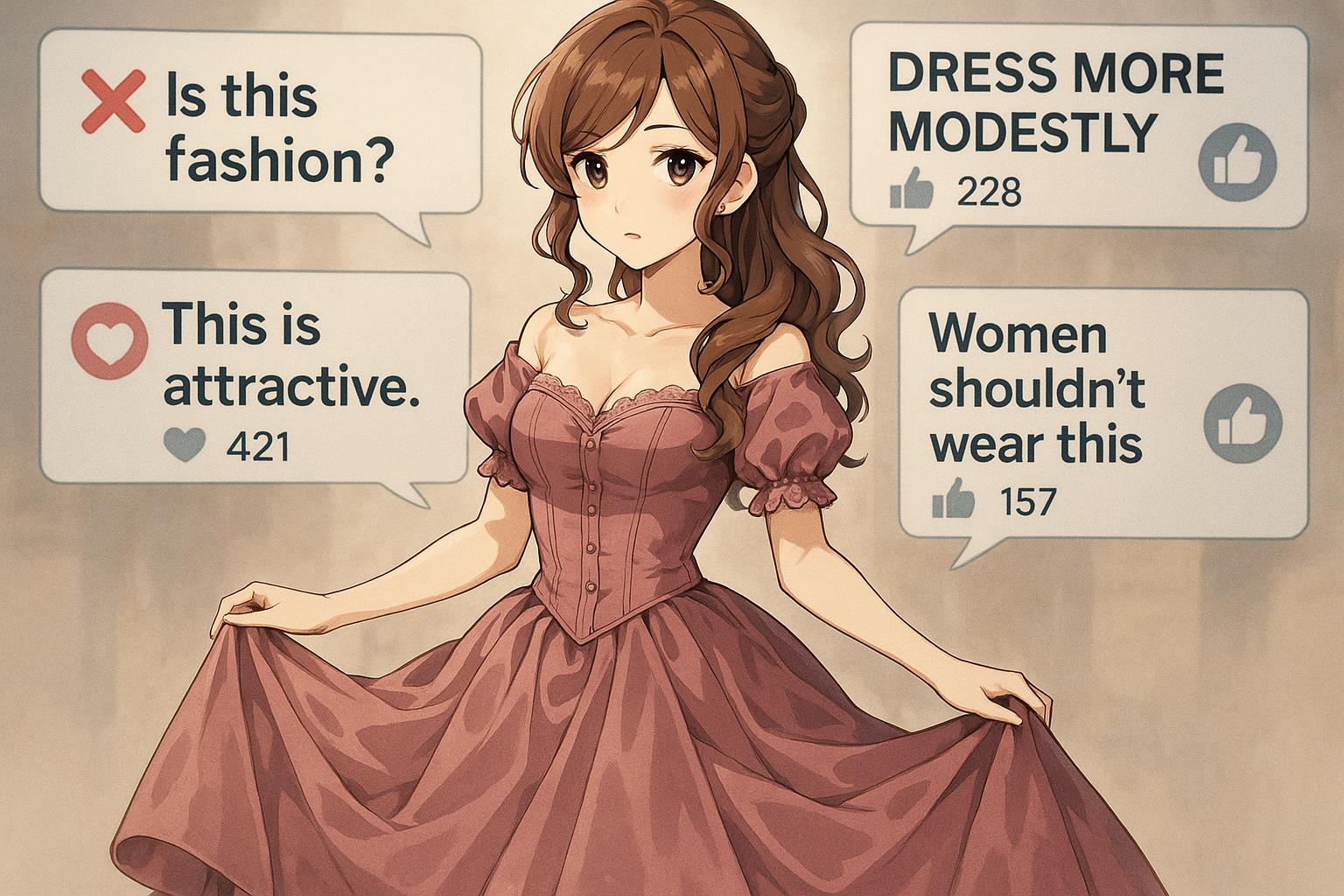A recent online discussion exploded when a married man shared his preferences for women's fashion, igniting a broader conversation about male perspectives on female attire. This dialogue was catalysed by a woman named Megha, who posted images of vintage gowns that she believed men found attractive on X, formerly Twitter. Her post highlighted dresses with tight bodices and long flowing skirts, celebrated for their feminine elegance. In her view, such clothing accentuates the hip-to-waist ratio while maintaining a sense of class—a stance that resonated with some but opened the floodgates for controversy.
When another woman, Charly, shared her husband's response to a similar request, the debate intensified. She had asked him to send a picture of a dress he found appealing, and he obliged with an image of a revealing black leather minidress. This choice provoked a storm of backlash online, with many commentators chastising Charly's husband for what they perceived as objectifying preferences. Comments ranged from suggestions of divorce to outright condemnation, with one critic declaring, “Your husband sees you as a sex object rather than a human being.”
The fierce reactions highlight a contentious issue in contemporary discussions about gender, attraction, and women's fashion. Many critics argued that the husband’s choice indicated a limited understanding of women, while others defended his right to express an opinion rooted in traditional notions of attractiveness. Some supporters pointed out that a man might associate “attractive” with “sexually appealing,” thus favouring outfits that accentuate certain physical features.
This dynamic captures a larger trend in men’s preferences when it comes to women's attire. Numerous studies have suggested that many men favour form-fitting clothing that highlights the female silhouette, such as fitted dresses and pencil skirts. Conversely, styles deemed less attractive often include baggy jeans or overly formal business attire. This was echoed in research published by Frontiers in Psychology, proposing that men perceive women in casual clothing as more attractive compared to those in business attire, shedding light on how societal norms influence perceptions of femininity.
Interestingly, men’s opinions are notably diverse, with many expressing varying tastes—from gothic fashion to casual chic. A humourous survey of male students indicated that attire choices like leggings and over-the-knee boots are particularly favoured, while others detest sweatpants. This wide spectrum suggests that while some men resonate with traditional femininity, others might appreciate more modern interpretations of style.
Despite the backlash that Charly’s husband received, not everyone was in agreement regarding the appropriateness of his preference. Defensive comments emerged, suggesting that criticism stemmed from a misunderstanding of masculine perspectives on beauty and attraction. Some argued that expecting men to appreciate subtle elegance over boldness is unrealistic and ultimately discriminatory, as each has a different interpretation of what constitutes attractiveness.
Similar controversies have punctuated online discussions in the past, such as the backlash against male influencers who publicly vocalised their fashion preferences. Notably, content creator Nicklaus Daniel stirred controversy when he described his ideal outfit for women, arguing that it spans beyond traditional styles to encompass a blend of comfort and allure. His comments again attracted criticisms and highlighted how deeply personal preferences can clash with broader societal expectations.
Ultimately, the discussion surrounding Charly and her husband's exchange reflects not just individual preferences, but the societal struggle to navigate the dichotomy between attraction, empowerment, and objectification. As the lines blur in how men and women perceive dress and desirability, it raises fundamental questions about what it means to be appealing and how much cultural context shapes our understanding of beauty.
Given the complexities of attraction, the conversation continues to evolve, potentially bridging understanding between the sexes or entrenching pre-existing divides. Whatever the outcome, it underscores a pivotal moment in the ongoing dialogue about fashion, identity, and the ever-changing landscape of gender relations.
Reference Map
- Paragraphs 1-3: Source 1
- Paragraph 4: Sources 2, 3, 4
- Paragraph 5: Source 5
- Paragraph 6: Source 6
- Paragraph 7: Source 7
- Paragraphs 8-9: Source 3, Source 4, Source 6
Source: Noah Wire Services
